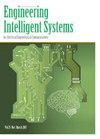Non-causal versus causal qualitative modelling and simulation
Engineering Intelligent Systems for Electrical Engineering and Communications
Pub Date : 1993-12-01
DOI:10.1049/ISE.1993.0015
引用次数: 7
Abstract
Qualitative models of dynamical systems fall into noncausal or causal approaches. The noncausal approach is widely used in part because traditional physics describes phenomena by means of symmetric functional relations. It supports the idea that causality can be ignored or inferred from the model itself. Nevertheless, when people explain how things work, they use causal relations. Representing causality explicitly makes it possible to take advantage of exogenous knowledge necessary for understanding the phenomena and supporting self-explanatory simulation. The basic concepts used in both approaches, in addition to the representation formalisms and algorithms, are discussed. >非因果对因果定性建模和模拟
动力系统的定性模型分为非因果方法和因果方法。非因果方法被广泛使用,部分原因是传统物理学通过对称函数关系来描述现象。它支持因果关系可以被忽略或从模型本身推断出来的观点。然而,当人们解释事物如何运作时,他们使用因果关系。明确地表示因果关系可以利用理解现象和支持自我解释模拟所必需的外生知识。讨论了两种方法中使用的基本概念,以及表示形式和算法。>
本文章由计算机程序翻译,如有差异,请以英文原文为准。
求助全文
约1分钟内获得全文
求助全文

 求助内容:
求助内容: 应助结果提醒方式:
应助结果提醒方式:


